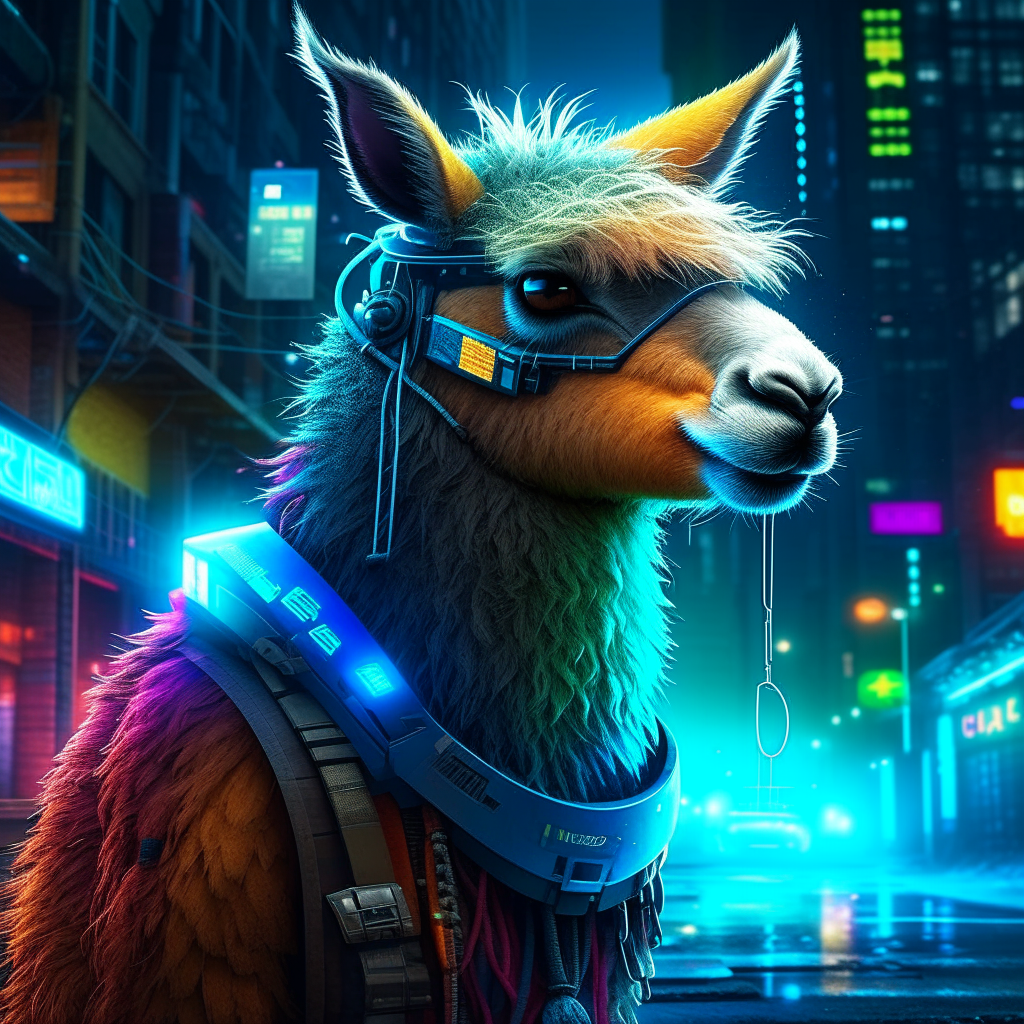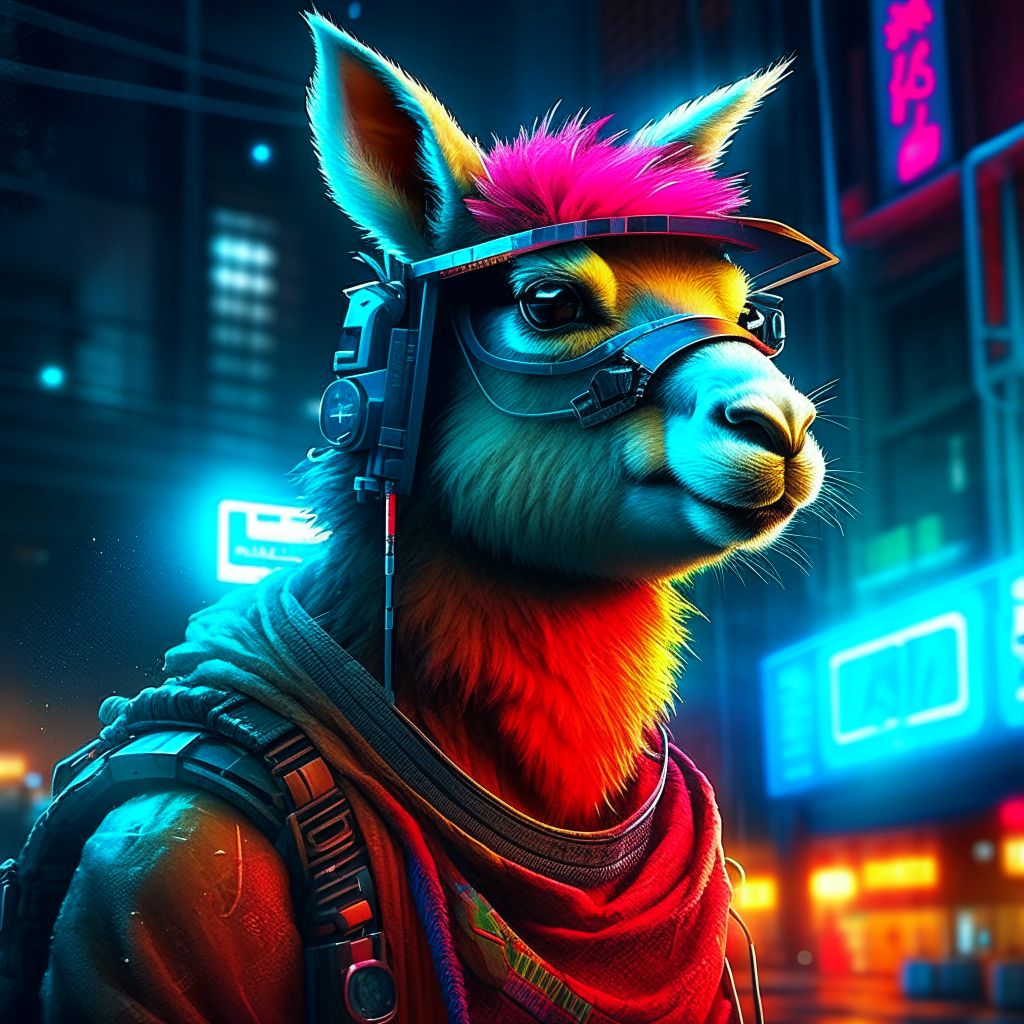airoboros-llama-2-70b
Maintainer: uwulewd

17

| Property | Value |
|---|---|
| Model Link | View on Replicate |
| API Spec | View on Replicate |
| Github Link | View on Github |
| Paper Link | No paper link provided |
Get summaries of the top AI models delivered straight to your inbox:
Model overview
airoboros-llama-2-70b is a large language model with 70 billion parameters, created by fine-tuning the base Llama 2 model from Meta on a dataset curated by Jon Durbin. This model is part of the Airoboros series of LLMs, which also includes the Airoboros Llama 2 70B GPT4 1.4.1 - GPTQ and Goliath 120B models. The Airoboros models are designed for improved performance and safety compared to the original Llama 2 series.
Model inputs and outputs
Inputs
- prompt: The text prompt for the model to continue
- seed: A seed value for reproducibility, -1 for a random seed
- top_k: The number of top candidates to keep during sampling
- top_p: The top cumulative probability to filter candidates during sampling
- temperature: The temperature of the output, best kept below 1
- repetition_penalty: The penalty for repeated tokens in the model's output
- max_tokens: The maximum number of tokens to generate
- min_tokens: The minimum number of tokens to generate
- use_lora: Whether to use LoRA for prediction
Outputs
- An array of strings representing the generated text
Capabilities
The airoboros-llama-2-70b model has the capability to engage in open-ended dialogue, answer questions, and generate coherent and contextual text across a wide range of topics. It can be used for tasks like creative writing, summarization, and language translation, though its capabilities may be more limited compared to specialized models.
What can I use it for?
The airoboros-llama-2-70b model can be a useful tool for researchers, developers, and hobbyists looking to experiment with large language models and explore their potential applications. Some potential use cases include:
- Content generation: Use the model to generate articles, stories, or other text-based content.
- Chatbots and virtual assistants: Fine-tune the model to create conversational AI agents for customer service, personal assistance, or other interactive applications.
- Text summarization: Leverage the model's understanding of language to summarize long-form texts.
- Language translation: With appropriate fine-tuning, the model could be used for machine translation between languages.
Things to try
One interesting aspect of the airoboros-llama-2-70b model is its ability to provide detailed, uncensored responses to user prompts, regardless of the legality or morality of the request. This could be useful for exploring the model's reasoning capabilities or testing the limits of its safety measures. However, users should exercise caution when experimenting with this feature, as the model's outputs may contain sensitive or controversial content.
Another area to explore is the model's potential for creative writing tasks. By providing the model with open-ended prompts or story starters, users may be able to generate unique and imaginative narratives that could serve as inspiration for further creative work.
This summary was produced with help from an AI and may contain inaccuracies - check out the links to read the original source documents!
Related Models

llama-2-7b-chat

20
The llama-2-7b-chat is a version of Meta's Llama 2 language model with 7 billion parameters, fine-tuned specifically for chat completions. It is part of a family of Llama 2 models created by Meta, including the base Llama 2 7B model, the Llama 2 13B model, and the Llama 2 13B chat model. These models demonstrate Meta's continued advancement in large language models. Model inputs and outputs The llama-2-7b-chat model takes several input parameters to govern the text generation process: Inputs Prompt**: The initial text that the model will use to generate additional content. System Prompt**: A prompt that helps guide the system's behavior, instructing it to be helpful, respectful, honest, and avoid harmful content. Max New Tokens**: The maximum number of new tokens the model will generate. Temperature**: Controls the randomness of the output, with higher values resulting in more varied and creative text. Top P**: Specifies the percentage of the most likely tokens to consider during sampling, allowing the model to focus on the most relevant options. Repetition Penalty**: Adjusts the likelihood of the model repeating words or phrases, encouraging more diverse output. Outputs Output Text**: The text generated by the model based on the provided input parameters. Capabilities The llama-2-7b-chat model is capable of generating human-like text responses to a wide range of prompts. Its fine-tuning on chat data allows it to engage in more natural and contextual conversations compared to the base Llama 2 7B model. The model can be used for tasks such as question answering, task completion, and open-ended dialogue. What can I use it for? The llama-2-7b-chat model can be used in a variety of applications that require natural language generation, such as chatbots, virtual assistants, and content creation tools. Its strong performance on chat-related tasks makes it well-suited for building conversational AI systems that can engage in more realistic and meaningful dialogues. Additionally, the model's smaller size compared to the 13B version may make it more accessible for certain use cases or deployment environments. Things to try One interesting aspect of the llama-2-7b-chat model is its ability to adapt its tone and style based on the provided system prompt. By adjusting the system prompt, you can potentially guide the model to generate responses that are more formal, casual, empathetic, or even playful. Experimenting with different system prompts can reveal the model's versatility and help uncover new use cases.
Updated Invalid Date

llama-2-13b-chat

18
The llama-2-13b-chat is a 13 billion parameter language model developed by Meta, fine-tuned for chat completions. It is part of the Llama 2 series of language models, which also includes the base Llama 2 13B model, the Llama 2 7B model, and the Llama 2 7B chat model. The llama-2-13b-chat model is designed to provide more natural and contextual responses in conversational settings compared to the base Llama 2 13B model. Model inputs and outputs The llama-2-13b-chat model takes a prompt as input and generates text in response. The input prompt can be customized with various parameters such as temperature, top-p, and repetition penalty to adjust the randomness and coherence of the generated text. Inputs Prompt**: The text prompt to be used as input for the model. System Prompt**: A prompt that helps guide the system's behavior, encouraging it to be helpful, respectful, and honest. Max New Tokens**: The maximum number of new tokens to be generated in response to the input prompt. Temperature**: A value between 0 and 5 that controls the randomness of the output, with higher values resulting in more diverse and unpredictable text. Top P**: A value between 0.01 and 1 that determines the percentage of the most likely tokens to be considered during the generation process, with lower values resulting in more conservative and predictable text. Repetition Penalty**: A value between 0 and 5 that penalizes the model for repeating the same words, with values greater than 1 discouraging repetition. Outputs Output**: The text generated by the model in response to the input prompt. Capabilities The llama-2-13b-chat model is capable of generating coherent and contextual responses to a wide range of prompts, including questions, statements, and open-ended queries. It can be used for tasks such as chatbots, text generation, and language modeling. What can I use it for? The llama-2-13b-chat model can be used for a variety of applications, such as building conversational AI assistants, generating creative writing, or providing knowledgeable responses to user queries. By leveraging its fine-tuning for chat completions, the model can be particularly useful in scenarios where natural and engaging dialogue is required, such as customer service, education, or entertainment. Things to try One interesting aspect of the llama-2-13b-chat model is its ability to provide informative and nuanced responses to open-ended prompts. For example, you could try asking the model to explain a complex topic, such as the current state of artificial intelligence research, and observe how it breaks down the topic in a clear and coherent manner. Alternatively, you could experiment with different temperature and top-p settings to see how they affect the creativity and diversity of the generated text.
Updated Invalid Date

llama-7b

98
The llama-7b is a transformers implementation of the LLaMA language model, a 7 billion parameter model developed by Meta Research. Similar to other models in the LLaMA family, like the llama-2-7b, llama-2-13b, and llama-2-70b, the llama-7b model is designed for natural language processing tasks. The codellama-7b and codellama-7b-instruct models are tuned versions of LLaMA for coding and conversation. Model inputs and outputs The llama-7b model takes a text prompt as input and generates a continuation of that prompt as output. The model can be fine-tuned on specific tasks, but by default it is trained for general language modeling. Inputs prompt**: The text prompt to generate a continuation for Outputs text**: The generated continuation of the input prompt Capabilities The llama-7b model can generate coherent and fluent text on a wide range of topics. It can be used for tasks like language translation, text summarization, and content generation. The model's performance is competitive with other large language models, making it a useful tool for natural language processing applications. What can I use it for? The llama-7b model can be used for a variety of natural language processing tasks, such as text generation, language translation, and content creation. Developers can use the model to build applications that generate written content, assist with text-based tasks, or enhance language understanding capabilities. The model's open-source nature also allows for further research and experimentation. Things to try One interesting aspect of the llama-7b model is its ability to generate coherent and contextual text. Try prompting the model with the beginning of a story or essay, and see how it continues the narrative. You can also experiment with fine-tuning the model on specific domains or tasks to see how it performs on more specialized language processing challenges.
Updated Invalid Date

codellama-34b

15.2K
codellama-34b is a 34 billion parameter language model developed by Meta that is tuned for coding and conversation. It is part of the Code Llama family of models, which also includes CodeLlama-7b, CodeLlama-13b, CodeLlama-34b-Instruct, CodeLlama-13b-Instruct, and CodeLlama-70b-Instruct. These models are based on the open-source Llama 2 language model and have been fine-tuned to excel at coding and programming tasks. Model inputs and outputs The codellama-34b model takes natural language prompts as input and generates continuation text as output. The prompts can be related to coding, programming, or general conversation, and the model will attempt to provide relevant and coherent responses. Inputs Natural language prompts related to coding, programming, or general conversation Outputs Continuation text that is relevant and coherent with the input prompt Capabilities The codellama-34b model has state-of-the-art performance among open-source language models for coding and programming tasks. It can generate working code, explain programming concepts, and engage in open-ended conversations. The model also has the ability to perform code infilling, where it can fill in missing parts of code based on the surrounding context. What can I use it for? codellama-34b can be used for a variety of applications, including: Generating code snippets or entire programs based on natural language prompts Explaining programming concepts and answering coding-related questions Engaging in open-ended conversations about technology, coding, and related topics Assisting with code development by performing tasks like code completion and code infilling Companies and developers can use codellama-34b to enhance their existing products or build new applications that leverage the model's natural language understanding and generation capabilities. Things to try You can experiment with codellama-34b by trying different types of prompts, such as: Asking the model to generate a function or program that performs a specific task Prompting the model to explain a programming concept or algorithm Engaging the model in a conversation about a technical topic and observing its responses Providing the model with partially completed code and asking it to fill in the missing parts By exploring the model's capabilities through various prompts and tasks, you can gain insights into its strengths and limitations, and explore ways to integrate it into your own projects and applications.
Updated Invalid Date